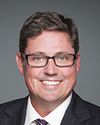Well, actually, that commercial was probably the very first one that Participaction developed. Yes, it showed that a 60-year-old Swede was in better shape than a 30-year-old Canadian.
We, as part of our report card.... As I mentioned, from a children and youth perspective, 48 countries are now replicating the report card. Every two years, we do an analysis across these 48 countries. I would say that Canada is probably in the middle of the pack.
We're actually doing well in the areas of organized activity and facilities. Where we're not doing really well is in active outdoor play, active transportation and the more unstructured types of activities. I think we've been very focused on structured activity, which provides value in and of itself, but it's not making our kids more physically active.




